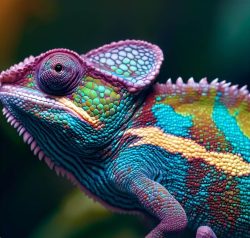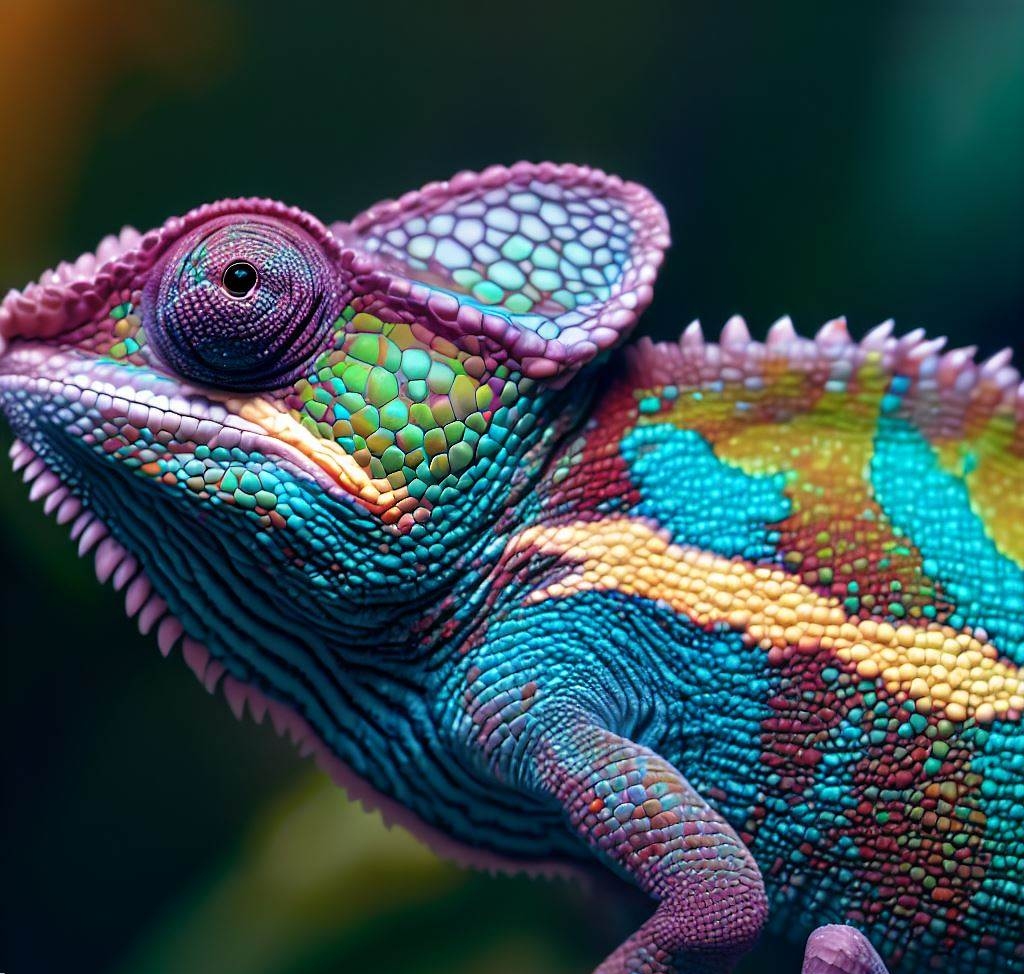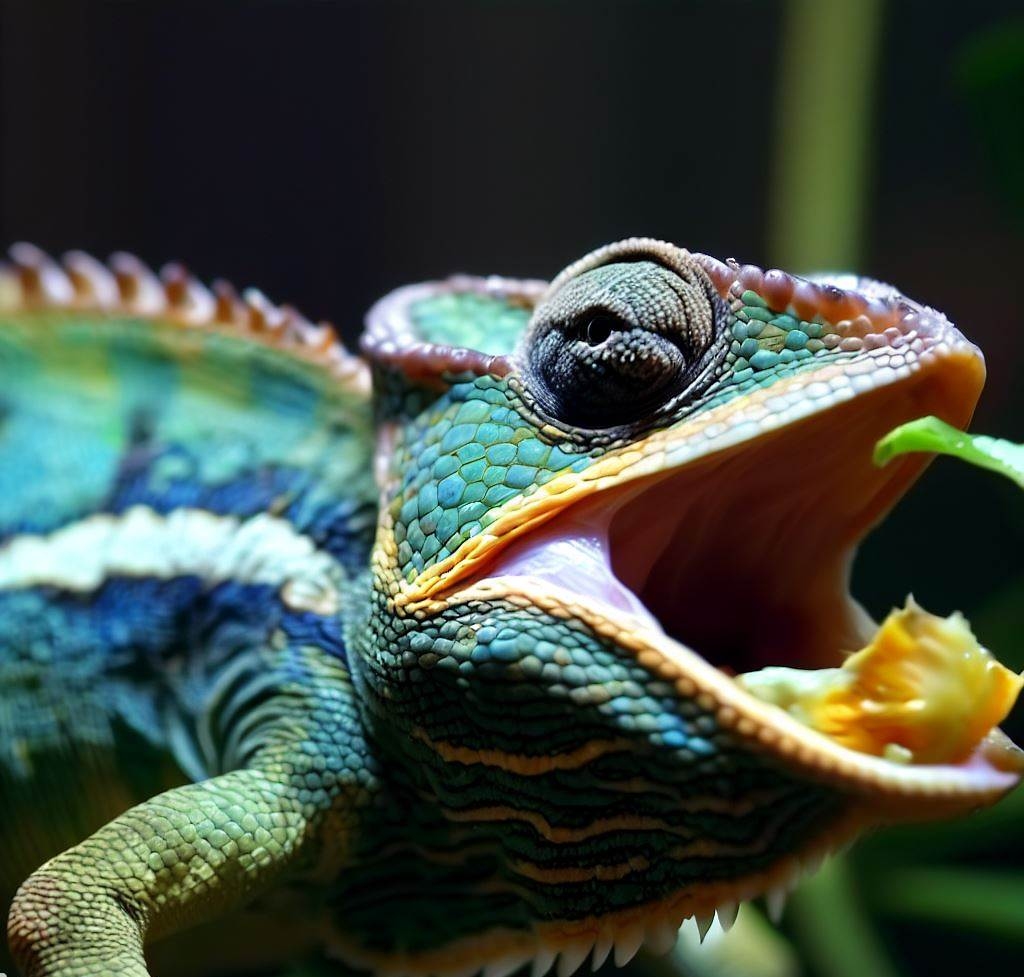Is Chameleon A Lizard Or Not?
The answer to question Is Chameleon A Lizard Or Not? The answer to this interesting answer is that chameleons are considered lizards without any doubt by boasting shared traits such as the scaly skin, a lengthy tail, and a distinctive head shape. Neither that what truly distinguishes chameleons is their extraordinary talent for color-changing which allows them to seamlessly mix into their surroundings or communicate with each other in an ecosystem.
As a major part of the reptile family these chameleons are belong to a deepest class that includes the snakes, turtles, and crocodiles. Renowned for their adaptability to various habitats and remarkable hunting techniques, chameleons predominantly inhabit regions across Africa, Madagascar, and select areas in Europe, Asia, and the Middle East. These incredible reptiles have garnered immense fascination from both researchers and wildlife enthusiasts alike.
So, the next time you chance upon a chameleon, take a moment to appreciate its lizard lineage and marvel at its astonishing ability to change colors—a true wonder of the reptilian realm.
Introduction:
Are you exciting to know that whether is chameleon a lizard or not? The chameleon is known for its massive ability to change colors by seeking to any color and has long captivated interest for nature enthusiasts and reptile lovers. In this content we will provide you with an information which is into the deep world of chameleons and shed light on the question of their classification. We will explore the fascinating characteristics and ability of these reptiles and unravel the mystery surrounding their lizard identity. So, if you’ve ever wondered about the truest nature of the chameleons then keep reading to searched and discover the answer to the interesting question: Is chameleon a lizard or not?
Distinct Features And Behaviors Of Chameleons:
- Chameleons are most attractive creatures known for their distinct features and behaviors.
- With their unique anatomical adaptations which including independently rotating eyes, prehensile tails, and zygodactylous feet,with the help of which they can withstand among reptiles.
- In conclusion what truly sets chameleons apart is their exclusive ability to change their colors by seeking to a color.
- This adaptation not only serves as a camouflage mechanism but also allows them to communicate with other chameleons, express emotions, and regulate body temperature.
- Chameleon species vary in size with smaller ones having weak jaws and less painful bites.
- Furthermore, chameleons possess a projectile tongue that can extend at high speeds to catch prey.
- Their slow and deliberate movements, combined with their excellent camouflage, make them skilled hunters.
- These fascinating reptiles are primarily arboreal, spending their lives in trees and bushes.
- With their intricate features and captivating behaviors, chameleons continue to intrigue researchers, photographers, and nature enthusiasts alike.
Physical Characteristics Of Chameleon:
Chameleons possess several unique physical characteristics that contribute to their fascinating nature. Here are some notable features:
Color-changing Ability:
The one of the most adaptative helps of chameleons is their ability to change colors a to surroundings. Some specialized cells present in them called chromatophores in their skin allow them to alter their appearance, adapt to their surroundings, communicate with other chameleons, and express emotions.
Independent Eye Movement:
Chameleons have sharp eyes that can move independently of each other. This provides them a panoramic field of vision and enables them to focus on two different objects simultaneously.
Tongue Projection:
Chameleons possess a specialized tongue that can rapidly extend and retract. This projectile tongue, often longer than the chameleon’s body, is used to capture prey with remarkable accuracy.
Prehensile Tail:
Chameleons have a long and flexible tail that acts as a fifth limb. It aids in climbing and provides balance, allowing them to navigate through the branches with ease.
Zygodactylous Feet:
Chameleons have zygodactylous feet, meaning their toes are fused into two groups. This adaptation gives them a strong grip, enabling them to cling to tree branches and traverse various surfaces.
Scaled Skin:
Like all reptiles, chameleons have scaly skin. These overlapping scales provide protection and help reduce water loss in their often arid habitats.
Casque or Crest:
Some species of chameleons have a casque or crest on their heads. This bony projection adds to their unique appearance and may serve various purposes, such as species recognition or defense.
Diet:
The chameleons are primar insectivorous reptiles which means that they primarily feed on insects. Most of their diet contains a variety of small invertebrates such as the crickets, grasshoppers, flies, and beetles.
While that the most of chameleons focus on insects and larger species may occasionally consume small vertebrates like lizards or birds. When the chameleon hunts they usually employ slow and precise movements, utilizing their exceptional camouflage and impressive tongue projection to capture their prey.
Habitat:
Chameleons are adapted to the wide range of habitats by including the rainforests, deserts, savannahs, and even the mountainous regions. Furthermore their natural inclination is towards an arboreal lifestyle in spending the majority of their livespan in trees and bushes.
They possess specialized feet and prehensile tails that provide them with the agility needed to navigate the branches. The specific habitat preferences can vary among chameleon species, with some favoring dense vegetation, while others thrive in more open or arid environments.
Survival Of Chameleons:
The survival action of chameleons depends on a multitude of factors that generally impact their well-being and their extensive existence. By understanding these key aspects is vital for creating an effective strategies to ensure their thriving and persistence in the natural world of predators.
Unique Adaptations:
These chameleons acquire the remarkable adaptations which provides them with their survival capabilities. Their ability to change colors helps them to mix seamlessly into their surroundings, providing effective camouflage against predators. Additionally, their independently moving eyes grant them a wide field of vision, aiding in the detection of potential threats and prey. With prehensile tails and zygodactylous feet, chameleons exhibit exceptional agility and precision while navigating their arboreal habitats.
Habitat Preservation:
The preservation of natural habitats where chameleons are lived or survived is paramount for their survival. Threats such as deforestation, urbanization, and the consequences of climate change gives a threatening risks to chameleon populations. Conservation efforts focus on establishing protected areas, promoting sustainable land use practices, and raising awareness about the criticality of habitat preservation.
Food Availability:
The proper food supply is necessary for the survival of chameleons. The concentrated use of the insecticides and pesticides in agriculture can have gangerous effects on the insect populations that chameleons depends upon for survival. Encouraging sustainable farming practices that minimize the use of harmful chemicals is crucial for maintaining a healthy insect population and supporting chameleon survival.
Climate and Temperature:
Chameleons are interesting creatures in meaning that their body temperature lies on their surrounding environment. Fluctual changes in the climate and temperature can significantly impact their metabolic processes, behavior, and reproductive cycles. Monitoring and mitigating the effects of climate change are vital to ensuring suitable conditions for chameleon populations.
Conservation Initiatives:
These organizations and research institutions or the local communities play crucial roles in protecting chameleons. Initiatives such as habitat restoration, captive breeding programs, and public education raise awareness about the importance of chameleon conservation. Enforcing regulations against illegal trade and collecting practices also helps combat threats to wild chameleon populations.
FAQs:
1 Is a chameleon a lizard yes or no?
Yes, a chameleon is indeed considered a lizard. With their scaly skin, long tail, and reptilian features, they belong to the lizard family.
2 Is A chameleon A lizard or a reptile?
Yes, a chameleon is both a lizard and a reptile.
3 Can lizards change color?
No, lizards, in general, cannot change their color. However, chameleons are a unique exception as they possess the remarkable ability to change their skin color.
4 Is a chameleon a lizard can change?
Yes, a chameleon is a type of lizard that has the exceptional ability to change its skin color, making it distinct among other lizards.
5 Is chameleon a good reptile?
Yes, chameleons are considered fascinating and unique reptiles due to their remarkable color-changing abilities and specialized adaptations. They are highly regarded and appreciated by reptile enthusiasts and researchers.




